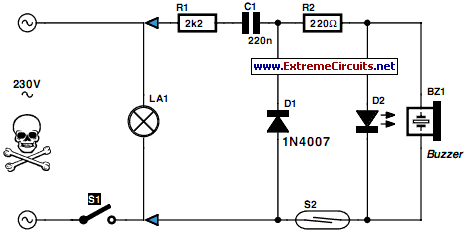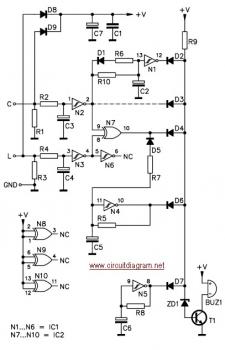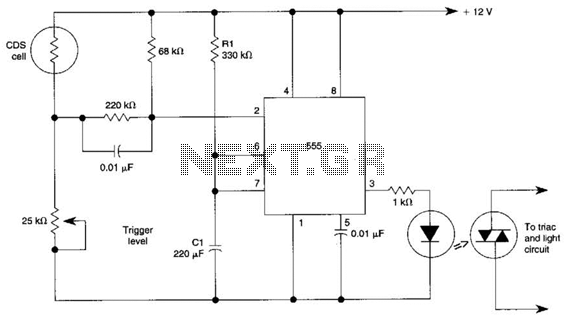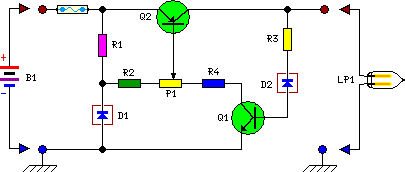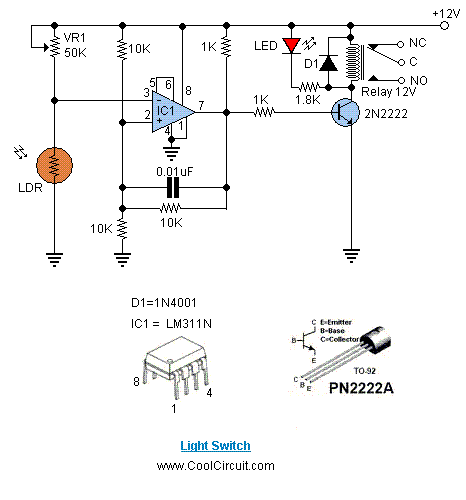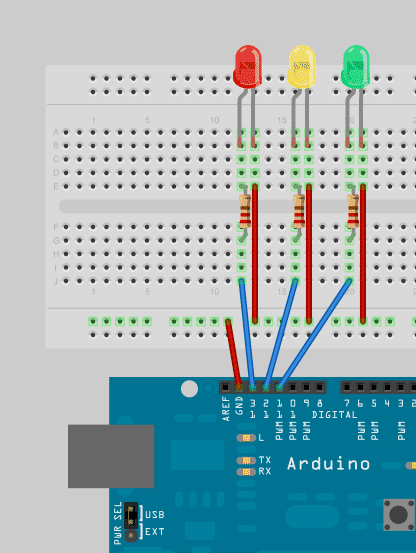
Flash light Timers
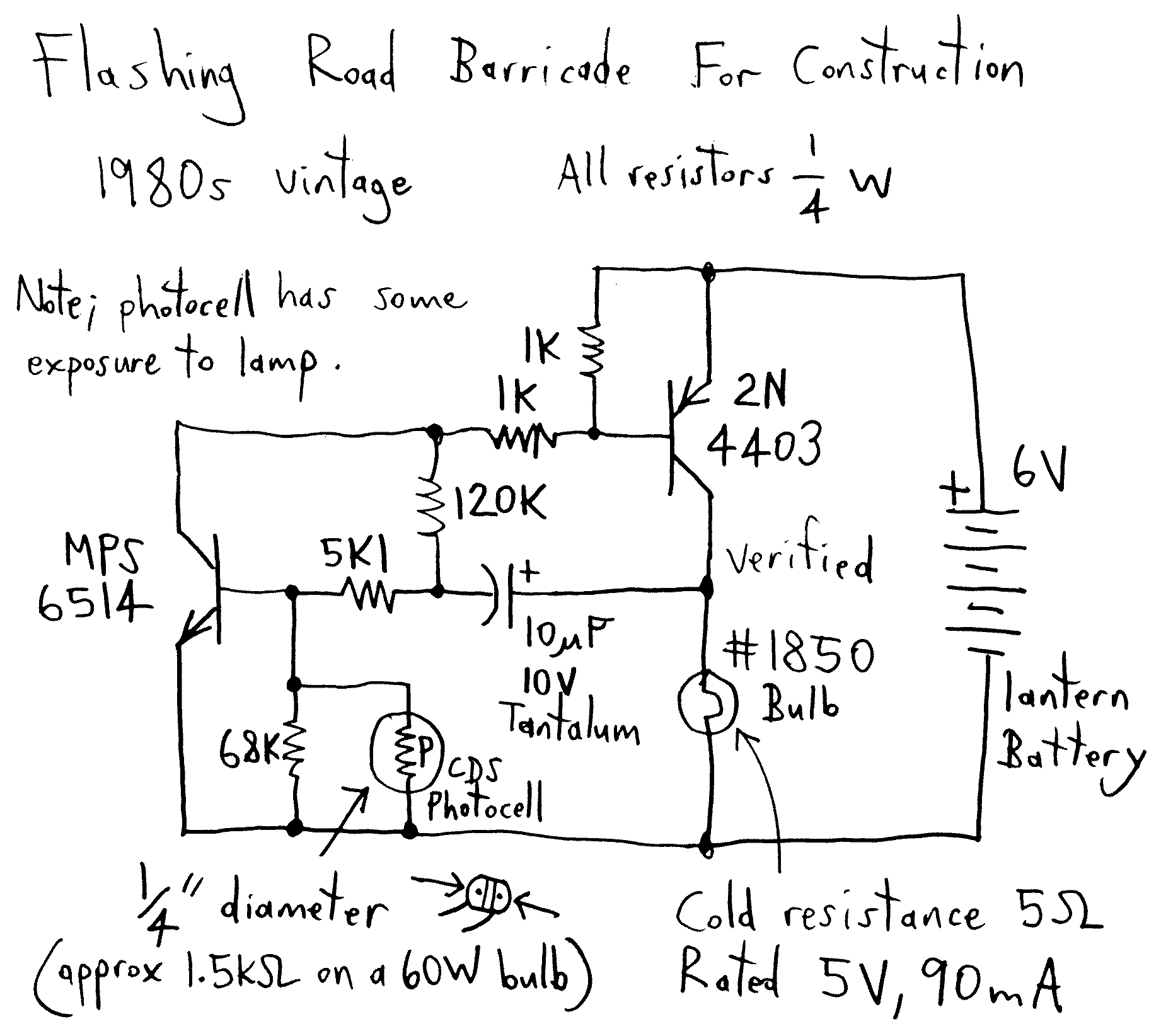
A well-designed circuit that automatically turns off if the pushbutton is held down or jammed for an extended period. It is not re-triggerable while the light remains on. The circuit initially starts at full brightness and gradually dims to complete darkness. A power switch could have been unnecessary if a 2.2 MΩ resistor were placed across the capacitor.
This circuit operates using a pushbutton switch that initiates the lighting function. Upon pressing the button, the circuit allows current to flow, illuminating the light source at full brightness. The gradual dimming effect is achieved through a timing capacitor and a resistor network that controls the discharge rate of the capacitor. As the capacitor discharges, the voltage across it decreases, resulting in a reduction of current to the light, causing it to dim over time.
The inclusion of a 2.2 MΩ resistor across the capacitor serves to provide a path for leakage current, which can help in discharging the capacitor more effectively when the circuit is inactive. This configuration enhances the reliability of the circuit by ensuring that the capacitor does not remain charged indefinitely, which could lead to unexpected behavior if the pushbutton is held down for too long.
Additionally, the circuit includes a mechanism to prevent re-triggering while the light is on. This is achieved through a simple latching arrangement that keeps the light in its dimming phase until it completely turns off. Once the light has fully dimmed, the circuit resets, allowing the pushbutton to be pressed again for a new cycle of illumination.
The overall design is effective for applications where a timed dimming effect is desirable, such as in ambient lighting scenarios. The simplicity of the circuit, combined with the thoughtful inclusion of components to manage the pushbutton interaction, makes it a practical solution for enhancing user experience while ensuring energy efficiency.A nice design which even turns off if the pushbutton is held depressed or jammed a long time. Not re-triggerable while the light is still on though(Thanks for pointing that out Watson): Below is one that starts off bright and slowly dims out to nothing. They could have eliminated the need for a power switch by putting a 2. 2M ohm resistor across th e capacitor: 🔗 External reference
This circuit operates using a pushbutton switch that initiates the lighting function. Upon pressing the button, the circuit allows current to flow, illuminating the light source at full brightness. The gradual dimming effect is achieved through a timing capacitor and a resistor network that controls the discharge rate of the capacitor. As the capacitor discharges, the voltage across it decreases, resulting in a reduction of current to the light, causing it to dim over time.
The inclusion of a 2.2 MΩ resistor across the capacitor serves to provide a path for leakage current, which can help in discharging the capacitor more effectively when the circuit is inactive. This configuration enhances the reliability of the circuit by ensuring that the capacitor does not remain charged indefinitely, which could lead to unexpected behavior if the pushbutton is held down for too long.
Additionally, the circuit includes a mechanism to prevent re-triggering while the light is on. This is achieved through a simple latching arrangement that keeps the light in its dimming phase until it completely turns off. Once the light has fully dimmed, the circuit resets, allowing the pushbutton to be pressed again for a new cycle of illumination.
The overall design is effective for applications where a timed dimming effect is desirable, such as in ambient lighting scenarios. The simplicity of the circuit, combined with the thoughtful inclusion of components to manage the pushbutton interaction, makes it a practical solution for enhancing user experience while ensuring energy efficiency.A nice design which even turns off if the pushbutton is held depressed or jammed a long time. Not re-triggerable while the light is still on though(Thanks for pointing that out Watson): Below is one that starts off bright and slowly dims out to nothing. They could have eliminated the need for a power switch by putting a 2. 2M ohm resistor across th e capacitor: 🔗 External reference
Warning: include(partials/cookie-banner.php): Failed to open stream: Permission denied in /var/www/html/nextgr/view-circuit.php on line 713
Warning: include(): Failed opening 'partials/cookie-banner.php' for inclusion (include_path='.:/usr/share/php') in /var/www/html/nextgr/view-circuit.php on line 713
